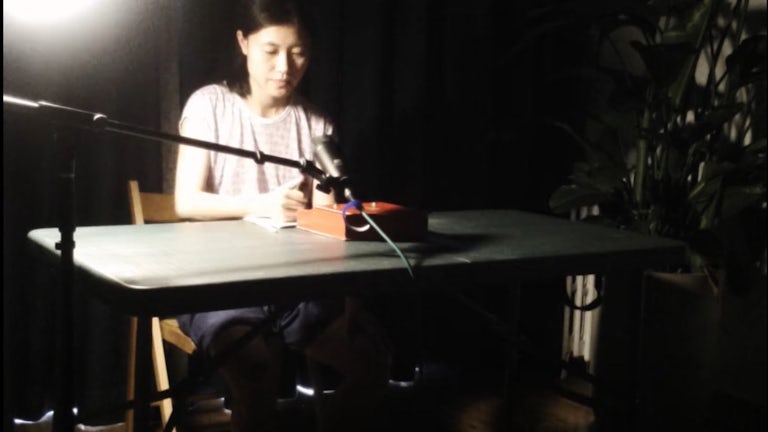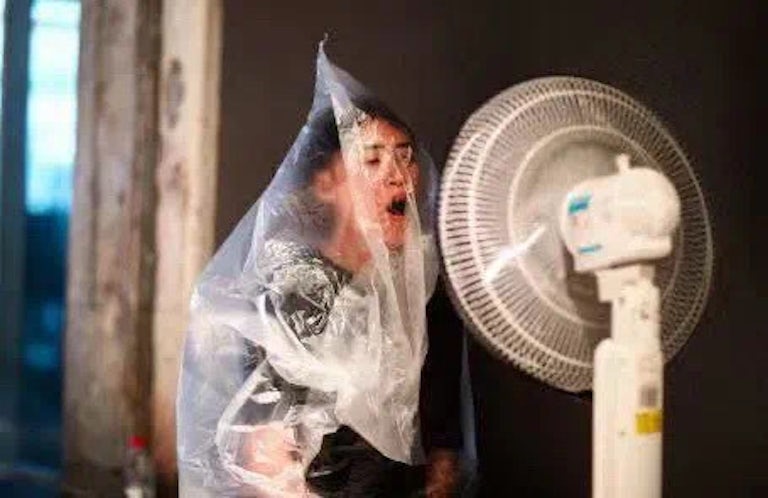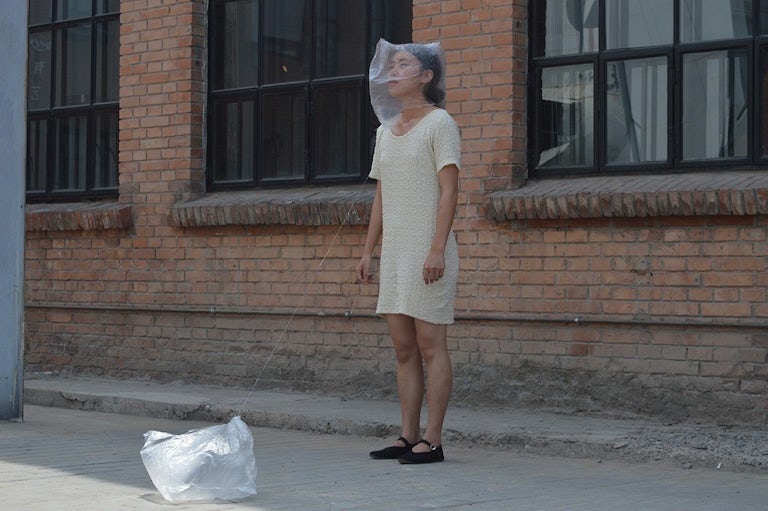Ake Zhang Yueyuan
Born in Haikou (1990), Ake moved to Beijing after failing the attempt to strike the exam. She mainly does context-specific sound experiments, events, performances, and installations. She is also a poet, a kind of waitress, a musician, and an organiser. Ake organises the Wujin Tiny Concert series and also sometimes runs a nomadic space called A2Space. She also has other different band projects : Happy Music, 100 Seconds (夺命100秒)and B-level Horror Movie Project (B级恐怖片计划). Her work often departs from concepts that are focused on some kind of everyday thinking, working with limited conditions and exploring the effects of these restrictions in order to draw out the existence and tension within the phenomenon itself. Ake evolves in the subtle spaces of life in a simple and direct way, at times taking ambiguous and twisting paths. Sometimes, she can’t get back.
aakkee.org
The everyday routine of an artist’s residency and the studio space at the Bridderhaus form the point of departure for an artistic exploration that strays from the beaten track. The source of this residency is the kind of ordinariness described by Georges Perec:
“What speaks to us, seemingly, is always the big event, the untoward, the extra-ordinary: the front-page splash, the banner headlines. Railway trains only begin to exist when they are derailed, and the more passengers that are killed, the more the trains exist […] Behind the event there has to be a scandal, a fissure, a danger, as if life reveals itself only by way of the spectacular […] What’s really going on, what we’re experiencing, the rest, all the rest, where is it? How should we take account of, question, describe what happens every day and recurs every day: the banal, the quotidian, the obvious, the common, the ordinary, the infraordinary, the background noise, the habitual?”
Georges Perec, in “Approaches to What?”, English translation published in Species of Spaces and Other Pieces, edited by John Sturrock, Penguin, 2008, here pp. 209–211.




